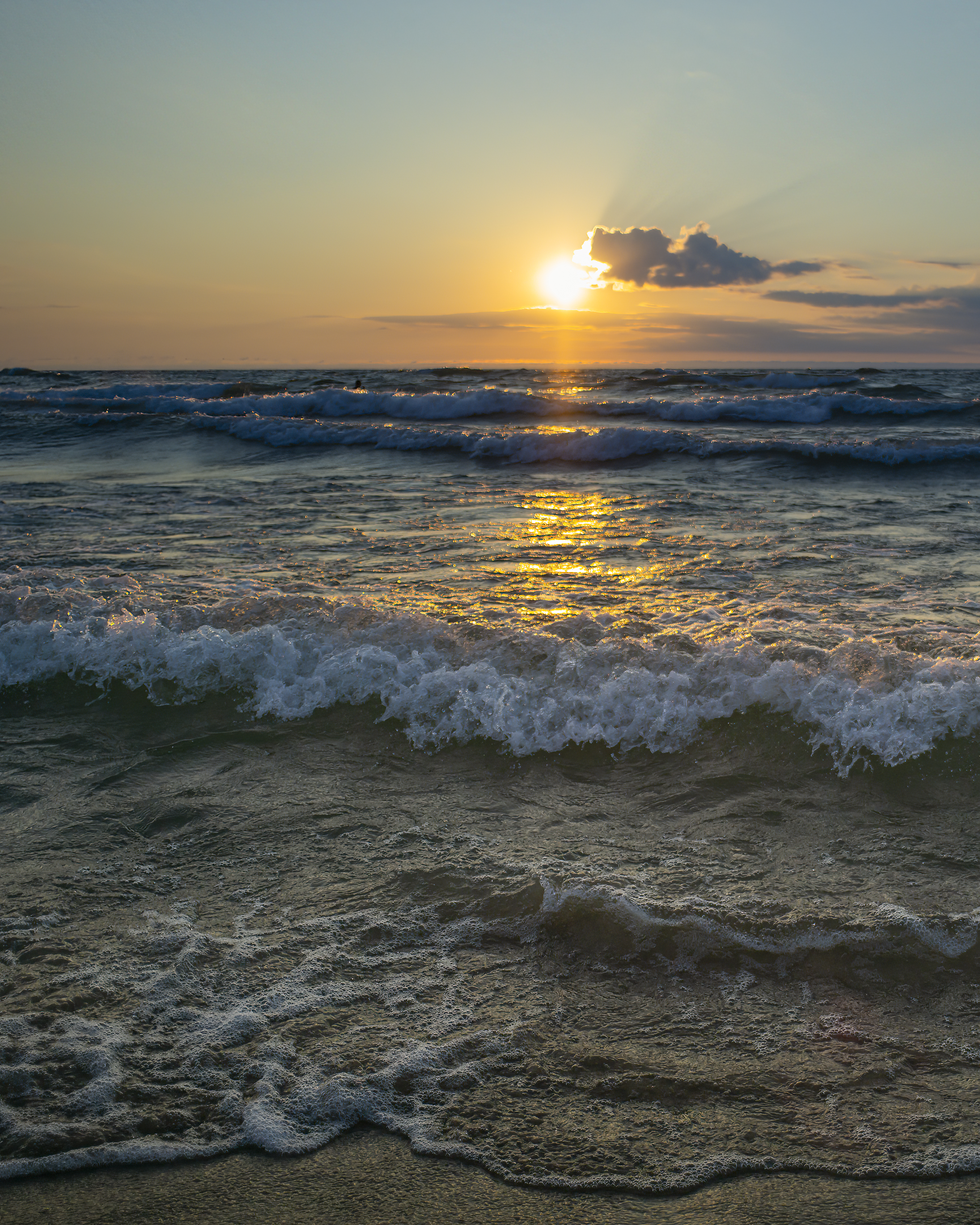Lake Michigan beaches are a mix of naturally formed and man-made beaches. While some beaches have formed naturally through geological processes, others have been created or replenished through human intervention.
Naturally Formed Beaches

Naturally formed beaches along Lake Michigan’s shoreline are common in northern Michigan, particularly from Grand Traverse Bay to the Straits of Mackinac. These beaches have developed over time due to the natural forces of wind, waves, and winter ice, which have shaped the shoreline and deposited sand and gravel.
The natural formation of these beaches is a result of the lake’s geological history. Lake Michigan was formed by glacial activity during the last ice age, and the shoreline has been shaped by the erosion and deposition of sediments over thousands of years. The sand and gravel that make up these beaches have been transported and deposited by the lake’s currents and waves.
Man-Made Beaches

In contrast, man-made beaches along Lake Michigan have been created through various human activities. The most notable example is the Chicago shoreline, which was originally a natural sand edge but was expanded and developed through the construction of bulkheads, the filling of land with dredged material, and the creation of parkland, beaches, harbors, and other features.
Similarly, in Indiana, beach nourishment projects have been undertaken to reduce erosion and create or replenish beaches. These projects involve dredging sand from the lake bottom or other sources and depositing it along the shoreline to create or widen beaches.
The motivation behind these man-made beach projects is often to enhance the recreational and aesthetic value of the shoreline, as well as to protect against erosion and flooding. By creating or replenishing beaches, these projects provide residents and visitors with more opportunities for swimming, sunbathing, and other water-based activities.
Replenishment and Nourishment
In addition to creating new beaches, human efforts have also focused on replenishing and nourishing existing beaches. This process involves dredging sand from the lake bottom or other sources and depositing it along the shoreline to maintain the natural beauty and recreational value of the beaches while also protecting them from erosion.
One example of this is the ongoing beach nourishment project in Indiana, where sand is being dredged from the lake bottom and used to replenish the beaches along the shoreline. This project helps to maintain the beaches and prevent further erosion, ensuring that they remain accessible and enjoyable for residents and visitors alike.
Factors Affecting Beach Formation
The formation and maintenance of Lake Michigan beaches, both natural and man-made, are influenced by a variety of factors, including:
-
Geological Processes: The underlying geology of the shoreline, including the composition and structure of the bedrock and sediments, plays a significant role in the formation and evolution of the beaches.
-
Hydrological Processes: The movement of water, including currents, waves, and water levels, can transport and deposit sediments, shaping the beaches over time.
-
Climatic Conditions: Weather patterns, such as wind, precipitation, and temperature, can affect the erosion and deposition of sediments, influencing the shape and size of the beaches.
-
Human Interventions: As discussed, human activities, such as beach nourishment, shoreline development, and dredging, can significantly impact the formation and maintenance of beaches along Lake Michigan.
Conclusion
In summary, Lake Michigan beaches are a diverse and dynamic landscape, with both naturally formed and man-made beaches coexisting along the shoreline. While natural geological and hydrological processes have shaped many of the beaches, human interventions have also played a significant role in creating, replenishing, and maintaining these valuable recreational and ecological resources.
Understanding the factors that influence the formation and evolution of Lake Michigan beaches is crucial for effective management and preservation of these important coastal environments.
References:
– Lake Michigan Beaches: Natural and Man-Made
– Beach Nourishment in Indiana
– The Geology of Lake Michigan
